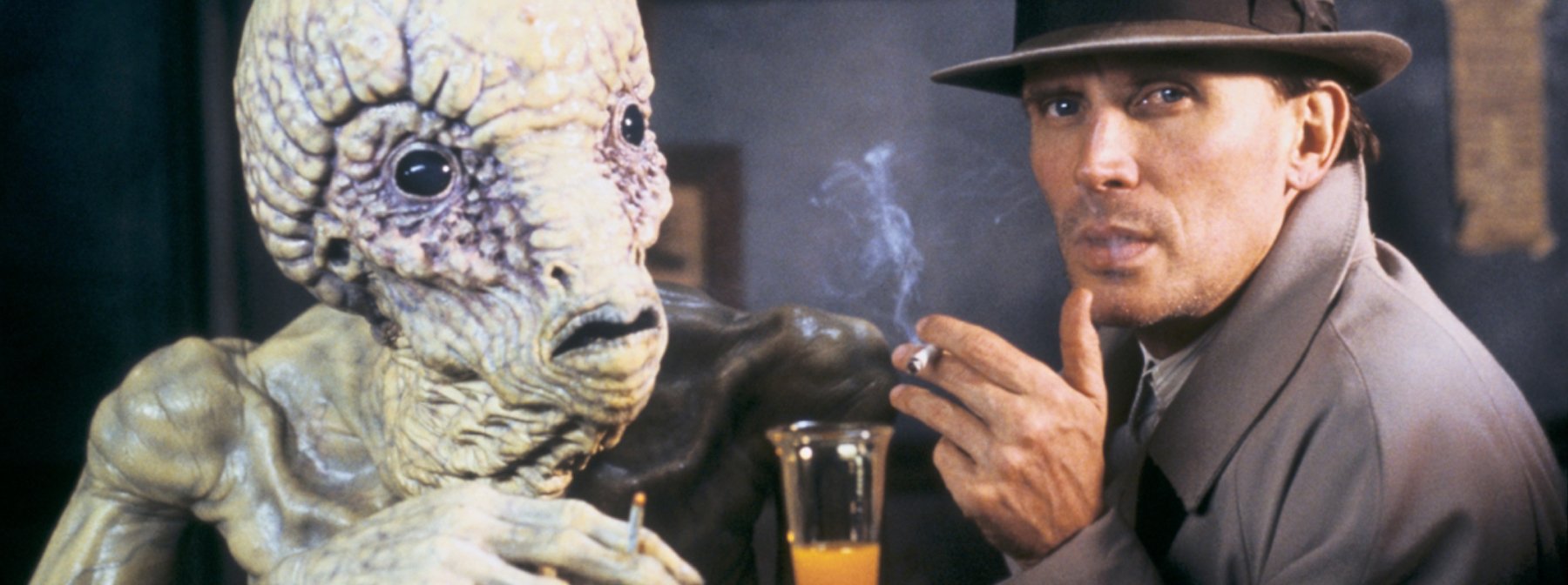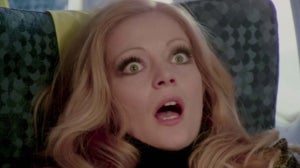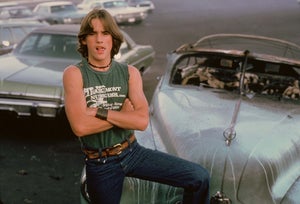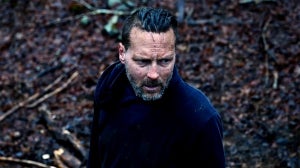
“If it can be written, or thought, it can be filmed.” ― Stanley Kubrick
Novels and films are different animals. Where one is a solitary experience relying on abstract thoughts, the other is still a relatively new art form; a visual medium delivering short, sharp shocks to a captive audience. Perhaps the adaptations that follow are not so much ‘unfilmable’ but, instead, provide an ‘unreadable’ source. Such stories defy conventions ― a challenging starting point for any production ― material that has always attracted interesting filmmakers who are willing to take risks by finding the spine (or spirit) of the piece and hopefully making it their own…
Ulysses (1967)
James Joyce loved cinema. Therefore, it is no surprise that the Irish writer looked into the possibilities of filming his 1920 novel Ulysses. Not only did he eye up the documentarian style of Walter Ruttmann, but also went as far as to meet with Russian director Sergei Eisenstein in 1929. Although no serious discussion took place with either of the filmmakers, it is interesting to read about the years that followed when Joyce discovered that Warner Bros. was attempting to adapt the novel, and so, contradicting his previous efforts, self-sabotaged, claiming his work to be ‘unrealisable’.
If there was ever the perfect year to release a version of his experimental text, then 1967 was the time to do so as New Hollywood exploded onto the screen with Bonnie and Clyde and the adaptation of Truman Capote’s In Cold Blood (1965). These were films that were pushing boundaries and Ulysses was no exception to such a controversial stance in American cinema, becoming one of the first films to utter the word ‘fuck’. Here the text is lifted verbatim rather than capturing the spirit of the novel as the roving central character, Leopold Bloom (Milo O'Shea), ambles through the streets of Dublin. However, this didn’t stop the screenplay from being Oscar-nominated the following year; the stunning black-and-white cinematography from Wolfgang Suschitzky (Get Carter, 1971) providing a genuine work of art.
A Clockwork Orange (1971)
Stanley Kubrick’s notorious rendition of Anthony Burgess’ 1962 novel pulls no punches… and, for all its controversies, it is still shocking to think how commercially successful the film was. With its infamous scenes and Nadsat-inspired tongue, Kubrick’s cold vision is as daring as the subtext; those brutal and challenging themes the crux of why the book feels like a definitive unfilmable text. This is the work of a director completely committed to his film ― one would have expected no less from him ― with (reputable) zero tolerance in skirting around anything deemed ‘problematic’.
The malevolent and morally ambiguous central character, Alex (Malcolm McDowell), remains an impulsive sociopath; a relatable caricature who is one of the darkest reflections of youth culture committed to page and screen. The success of A Clockwork Orange as an adaptation is down to Kubrick being less concerned with the future and instead, ‘the next day’.
https://www.youtube.com/watch?v=T54uZPI4Z8A&pp=ygUYY2xvY2t3b3JrIG9yYW5nZSB0cmFpbGVy
Dune (1984)
Before David Lynch’s ambitious space oddity, both Ridley Scott and Alejandro Jodorowsky were attached to Frank Herbert’s seminal sci-fi masterwork. In a wonderful exploration of one of the most infamous (abandoned) film projects of all time, the superb documentary Jodorowsky’s Dune (2013) sits down with the Chilean-French Auteur, discussing his ‘bible’ on the production. He literally aimed for the stars with an incredible pitch that included Moebius and H.R. Giger providing the storyboards and concept art, while also proposing a Pink Floyd score and envisioning Orson Welles and Salvador Dali as villains Baron Harkonen and Emperor Shaddum IV.
The original 1962 novel is hardly formulaic to begin with ― its unfilmable reputation down to Herbert’s dense universe ― a visionary masterwork laced with ecological themes and political intrigue all wrapped up in a mind-altering epic that could only be the product of ’60s counterculture. Despite Lynch practically disowning his version, for all its Lynchian distractions and inevitable trimming of crucial material there is something both intoxicating and nostalgic about the film.
https://www.youtube.com/watch?v=sJ9VAJ1f0zU&pp=ygURZHVuZSAxOTg0IHRyYWlsZXI%3D
Naked Lunch (1991)
The Beat Generation was responsible for some of the most idiosyncratic, abrasive and controversial writers whose work provoked post-war America. By the very notion of their left leanings and conscientious objections, William S. Burroughs was considered the most provocative character from this movement. His 1959 novel The Naked Lunch was certainly no exception. Burroughs ― who had no recollection of writing the book ― unconsciously presented a series of connected vignettes that could be read in any order.
It is miraculous how a film based on a book with no narrative structure could have been made at all; the adaptation arguably the most challenging film on this list. David Cronenberg’s approach was to share fragments of the text (that was indeed Burroughs’ style) that only enhance the insanity of what plays out. The result is a hybrid between the biological body horror we would come to expect from Cronenberg punctuated by the biographical elements of Burroughs’ life. Peter Weller’s ‘Bill’ isn’t so much the alter ego from the original text, but Burroughs himself, plunged into the hallucinogenic world of the Interzone, littered with noirish sounds and imagery that feel as scattered as Burroughs' broken mind… and for that alone, the film does its job.
https://www.youtube.com/watch?v=_bgrNm7rdeo&pp=ygURbmFrZWQgbHVuY2ggYXJyb3c%3D
Orlando (1992)
Apart from its stream-of-consciousness writing style and liberal views on sexuality for the time, there is little to suggest today that Virginia Woolf’s feminist classic Orlando: A Biography, first published in 1928, could never be adapted. A seminal writing for both gender and transgender studies, Woolf’s whimsical satire explores the history of English literature elevated by a unique central character ― the eponymous poet, Orlando ― who, out of time and place, begins life as a man and then becomes a woman living for 400 years from the Elizabethan era to the 20th century.
Again, British writer/director Sally Potter proves such a work can be adapted. But the critical and commercial success was the result of a nine-year labour of love in which she was warned early on about the challenges in filming a classic piece of literature, especially one that spans centuries. She persevered and brought one of the best examples to the list; not only creating a visual delight but also showcasing a mesmerising central performance from a young Tilda Swinton; her deft delivery and androgyny a major part of the film’s success as she articulates and navigates us through the ages.
https://www.youtube.com/watch?v=MorOaD61KUI&pp=ygUMb3JsYW5kbyAxOTky
The Call of Cthulhu (2005)
H.P. Lovecraft’s hugely influential works have not always been successfully adapted, but have inspired horror masterpieces including The Thing (1982). This 47-minute short film leans heavily into homage; a mock piece of vintage that claims to be the first Lovecraft adaptation and, distributed by the H. P. Lovecraft Historical Society, there is some genuine weight and credibility to the production. Remaining true to the original story, creative Andrew Leman, with his production partner Sean Branney, utilised a tongue-in-cheek process labelled ‘Mythoscope™’ that delivers a mix of modern and vintage techniques. As intended, the result is an authentic and faithful screen adaptation of the original 1928 short story, one of which is often considered one of the most ‘unfilmable’ works to date.
https://www.youtube.com/watch?v=p6vTI7aDIHc&pp=ygUgdGhlIGNhbGwgb2YgY3RodWxodSAyMDA1IHRyaWFsZXI%3D
High Rise (2015)
J.G. Ballard’s disorienting dystopian tale from 1975 has seen several futile attempts over the years; from Nicolas Roeg originally attached to Vincenzo Natali and Richard Stanley’s epic vision proposed in 2009. It was down to the sheer tenacity of British film producer Jeremy Thomas (there from the offset) that a film ever saw the light of day. Eventually director Ben Wheatley and his wife, screenwriter Amy Jump, who approached Thomas, the couple pitching a grounded vision that, rather daringly, allowed for Ballard’s writing to breathe onscreen.
As with most examples of the unfilmable, this is not a plot-driven story but one that is ‘built’ by specific themes and contexts born out of ’70s Britain. Ballard’s concrete landscapes emphasized the bureaucracy and savagery, “architecture designed for war, on the unconscious level if no other.” Echoing the inherent philosophy of Swiss-French architect Le Corbusier, who believed that “a house is a machine for living in”, Ballard instead presented the high-rise as a “huge machine designed to serve, not the collective body of tenants, but the individual resident in isolation.”
https://www.youtube.com/watch?v=LKPghZ5cc_E&pp=ygUWaGlnaCByaXNlIDIwMTUgdHJhaWxlcg%3D%3D
The Man Who Killed Don Quixote (2018)
There have been several attempts to adapt Cervantes’ original 17th-century metafiction Don Quixote; most notably Orson Welles’ unfinished version ― taking over 30 years to see a release ― and, of course, Terry Gilliam’s numerous attempts; one of which resulted in the documentary Lost in La Mancha (2002). Gilliam was as obsessed with bringing the character of Quixote to the screen ― embarking on his own 30-year quest ― and, despite his eight previous attempts nothing was going to stop him. Not even the wrath of God.
After numerous distinguished actors had taken up the saddle over the years ― Robert Duvall, John Hurt, Michael Palin, Jean Rochefort ― the 2018 version finally saw Gilliam regular Jonathan Pryce at the reins of the old (mad) knight, while Adam Driver’s disillusioned film director, Toby, becomes a Sancho Panza-like sidekick. It would seem, for all his sentimentality for the character, Gilliam ― finally completing the film ― became Quixote; the director’s impossible tasks, much like Cervantes’ original work, becoming the story within the story. Although adaptations have been mired with problems over the years, Gilliam’s final version manages to deliver a fable on madness and movies. If ever there was an apt tale. Unfilmable? Unstoppable.
https://www.youtube.com/watch?v=PkRo5l8679g&pp=ygUrdGhlIG1hbiB3aG8ga2lsbGVkIGRvbiBxdWl4b3RlIDIwMTggdHJhaWxlcg%3D%3D

Related Articles







